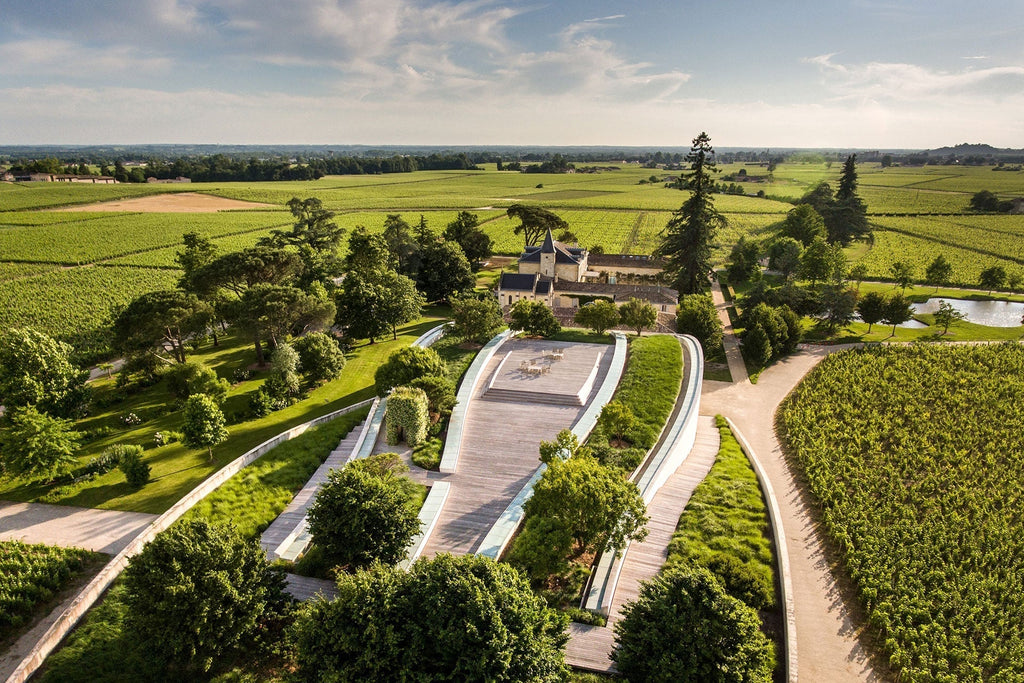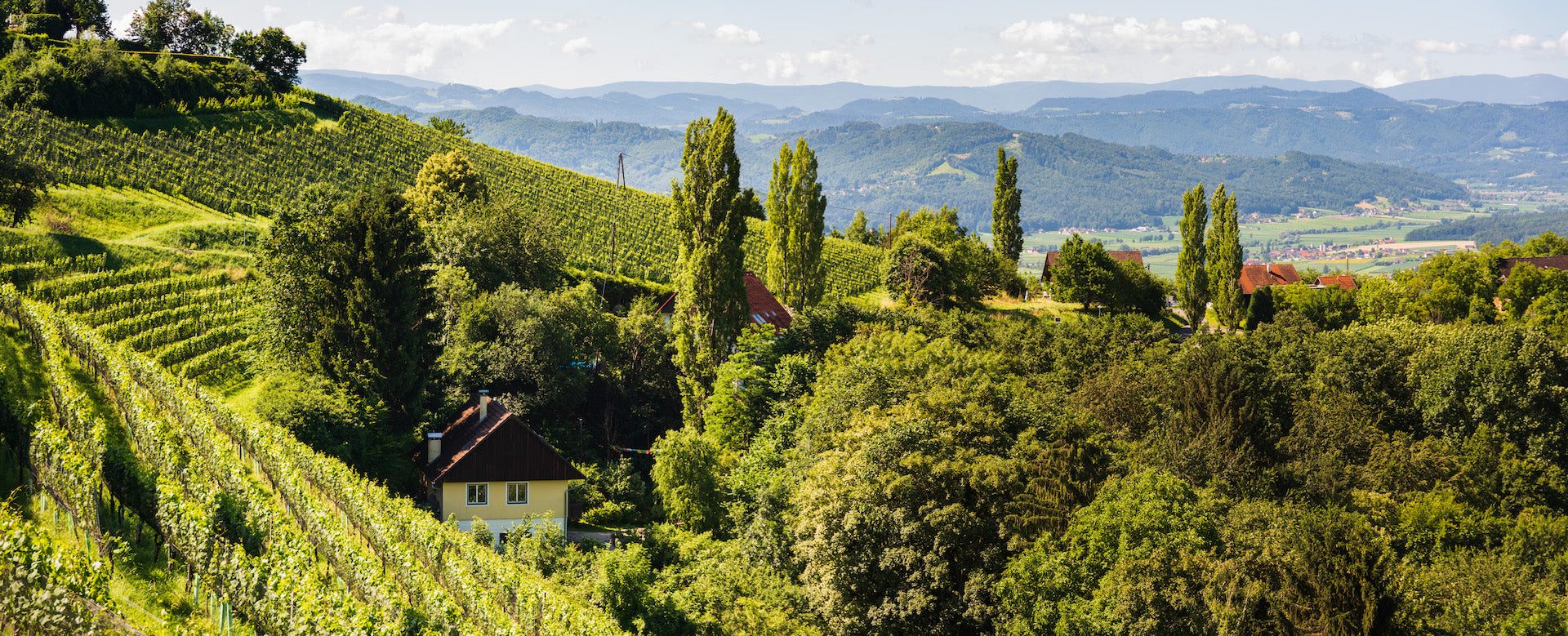Château Cheval Blanc – A Saint-Émilion Icon with a Unique Legacy

Few names in Bordeaux command as much reverence as Château Cheval Blanc. Situated on the boundary of Saint-Émilion and Pomerol, this legendary estate produces wines that combine power, finesse, and longevity like few others can. With a history stretching back to the 19th century and a portfolio that now includes both a second red wine and an ambitious dry white.
In this blog, we explore the history, terroir, winemaking philosophy, and the stories behind Château Cheval Blanc, Le Petit Cheval and Le Petit Cheval Blanc — the estate’s second red and white wines.
A Brief History of Château Cheval Blanc
The origins of Cheval Blanc date back to 1832, when Jean-Jacques Ducasse, the president of the Libourne Court of Appeals, purchased vineyard parcels in Saint-Émilion. But it was really under Jean Laussac-Fourcaud, Ducasse’s son-in-law, that the estate took shape. By acquiring land from Château Figeac, he laid the foundation for a distinct terroir, planting a large portion of Cabernet Franc — highly unusual in Right Bank Bordeaux at the time.
Through the 20th century, Cheval Blanc built a reputation for consistency and longevity, with mythical vintages such as 1947, 1949, and 1961 achieving cult status. Since 1998, the estate has been owned by LVMH (Moët Hennessy Louis Vuitton), under the leadership of Pierre Lurton, who has overseen modernization efforts while preserving the estate’s soul.
Terroir and Location
One of the secrets behind Cheval Blanc’s greatness lies in its exceptional terroir. The estate covers 39 hectares, but what makes it special is its unique combination of gravel, clay, and sandy soils — a rare blend that mimics both Left and Right Bank characteristics. This diversity allows for Cabernet Franc and Merlot to flourish in equal measure.
Although the château is officially located in Saint-Émilion, its terroir closely resembles neighboring Pomerol. This borderline location gives Cheval Blanc wines their signature style: the finesse of Saint-Émilion combined with the plush depth of Pomerol.
Grape Varieties and Vineyard Composition
Cheval Blanc is known for its unusual blend for a Right Bank property:
- 52% Cabernet Franc
- 43% Merlot
- 5% Cabernet Sauvignon (used occasionally in recent years)
This dominance of Cabernet Franc gives the wine its floral perfume, structure, and ability to age gracefully for decades.
The vineyard is farmed with an emphasis on sustainability and biodiversity. Since 2008, the estate has gradually adopted more environmentally friendly practices, including the use of organic composts, horse ploughing, and even drone technology to monitor vineyard health.
The Grand Vin – Château Cheval Blanc
Each year, only about 6,000 to 7,000 cases of Château Cheval Blanc are produced. The wine is fermented in 52 custom-made concrete tanks, each designed to correspond to a specific vineyard plot. This allows for micro-vinification, ensuring that every parcel is treated individually.
Cheval Blanc is aged in 100% new French oak barrels for about 16–18 months. The result is a wine with deep complexity, silky tannins, and extraordinary aging potential.
Tasting Notes (in general terms):
- Aroma: violets, graphite, dark cherries, crushed herbs
- Palate: rich yet refined, layered with cassis, tobacco leaf, and spice
- Finish: long, harmonious, and ever-evolving
Classification and Prestige
In the Saint-Émilion classification, Cheval Blanc holds the top status of Premier Grand Cru Classé “A”. It was one of only two châteaux (along with Ausone) awarded this elite title in 1954. Though the estate withdrew from the classification in 2022, citing lack of transparency and relevance, its prestige remains untouched.
Cheval Blanc’s position in the wine world is often compared to First Growths of the Left Bank, and some even place it in a class of its own.
The Second Wine: Le Petit Cheval
First produced in 1988, Le Petit Cheval is the estate’s second red wine, made from the same vineyard but from plots or barrels that don’t make the cut for the Grand Vin.
- It is typically Merlot-dominant, though the blend varies by vintage.
- Annual production is much smaller than the Grand Vin.
- Aging is done in a mix of new and used oak, with slightly less time in barrel.
Le Petit Cheval is an excellent gateway into the world of Cheval Blanc — often more approachable in its youth, more affordable, yet crafted with the same precision and terroir expression. In exceptional vintages, it can age beautifully for 15–20 years.
The White Wine: Le Petit Cheval Blanc
In 2014, Cheval Blanc introduced something bold: a dry white wine made under the same philosophy as its red counterparts. Called Le Petit Cheval Blanc, this wine represents the estate’s vision of Right Bank white wine excellence.
- Sourced from a 6.6-hectare parcel in Saint-Christophe-des-Bardes, originally planted by Château La Tour du Pin (acquired by Cheval Blanc in 2006)
- Made from Sauvignon Blanc and a small portion of Sémillon
- Fermented and aged in oak vats, foudres, and amphorae
The white wine is not classified and does not carry the Saint-Émilion AOC, as dry whites are not permitted under that appellation. Instead, it is labeled under Bordeaux Blanc.
Style:
- Fresh yet rich
- Aromas of white peach, citrus, and lime blossom
- Mineral-driven palate with beautiful texture and length
Production is very limited, with under 10,000 bottles annually, making it a rare and coveted white Bordeaux.
Collectability and Aging
Château Cheval Blanc wines are built for the long haul. Top vintages such as 1947, 1982, 1990, 2000, 2005, 2009, 2010, 2015, and 2016 are still evolving beautifully. Some vintages, like 1998 or 2001, are now hitting their peak.
- Optimal drinking window: 15–40+ years, depending on the vintage
- Le Petit Cheval: 5–30 years
- Le Petit Cheval Blanc: best within 5–10 years
Due to low production and global demand, Cheval Blanc wines retain value extremely well and often appreciate significantly over time, making them prized assets for collectors.
Conclusion
Château Cheval Blanc represents the pinnacle of Right Bank Bordeaux — a domaine that balances heritage with innovation, and tradition with exploration. Whether it’s the age-worthy Grand Vin, the more approachable Le Petit Cheval, or the vibrant white Le Petit Cheval Blanc, this estate continues to shape the identity of Saint-Émilion wines on the world stage.
For collectors, connoisseurs, or those simply curious about one of Bordeaux’s most storied estates, Cheval Blanc offers something truly rare: a complete, authentic, and evolving expression of terroir and time.




